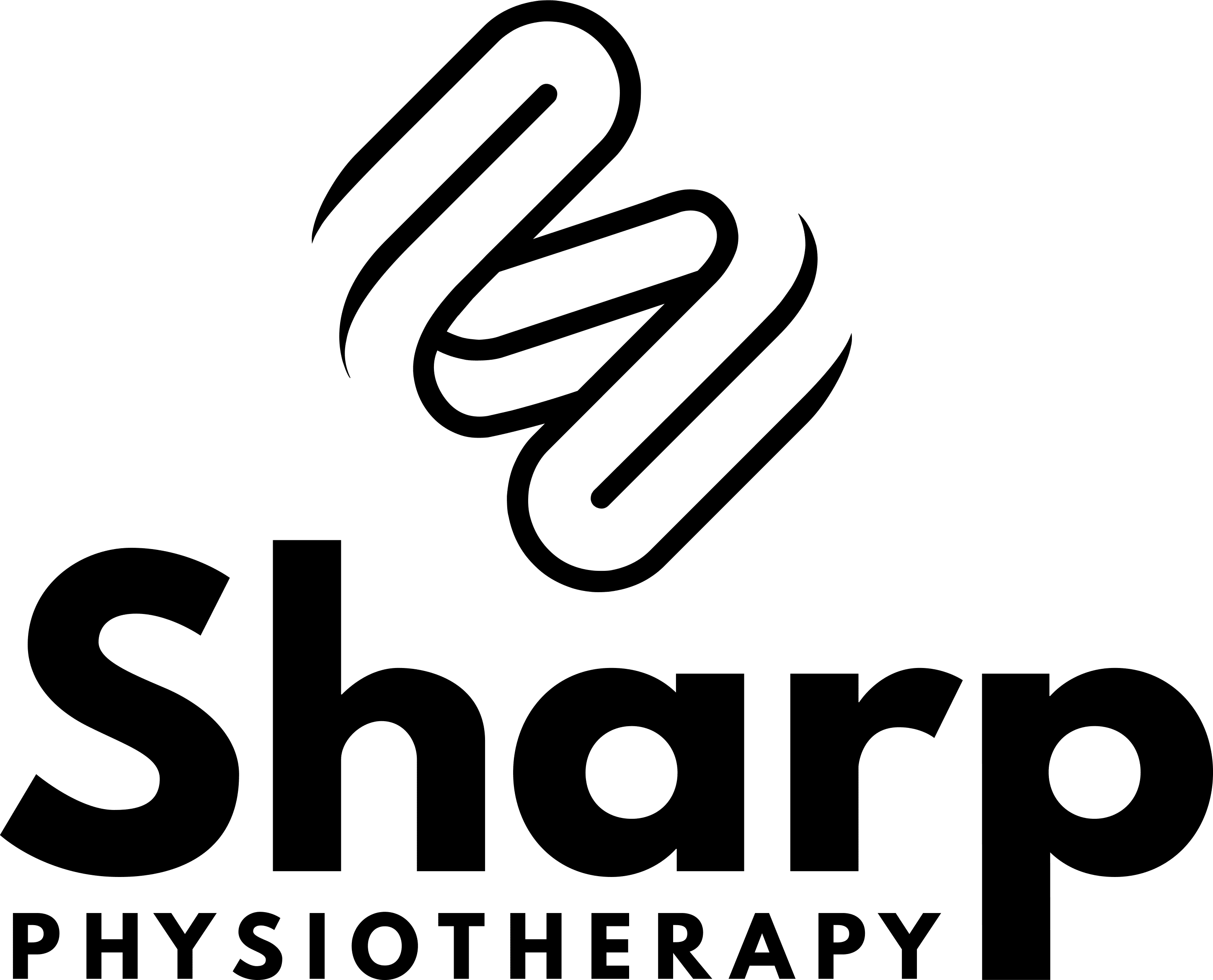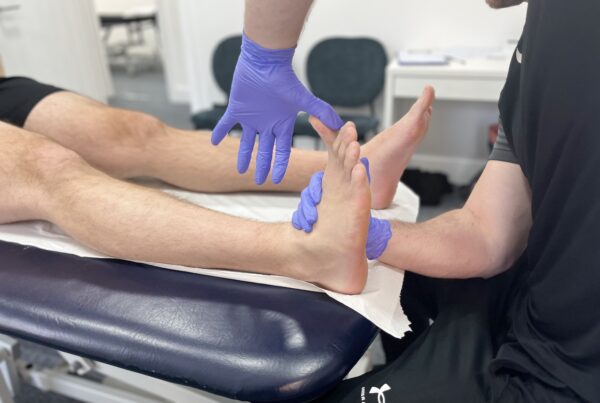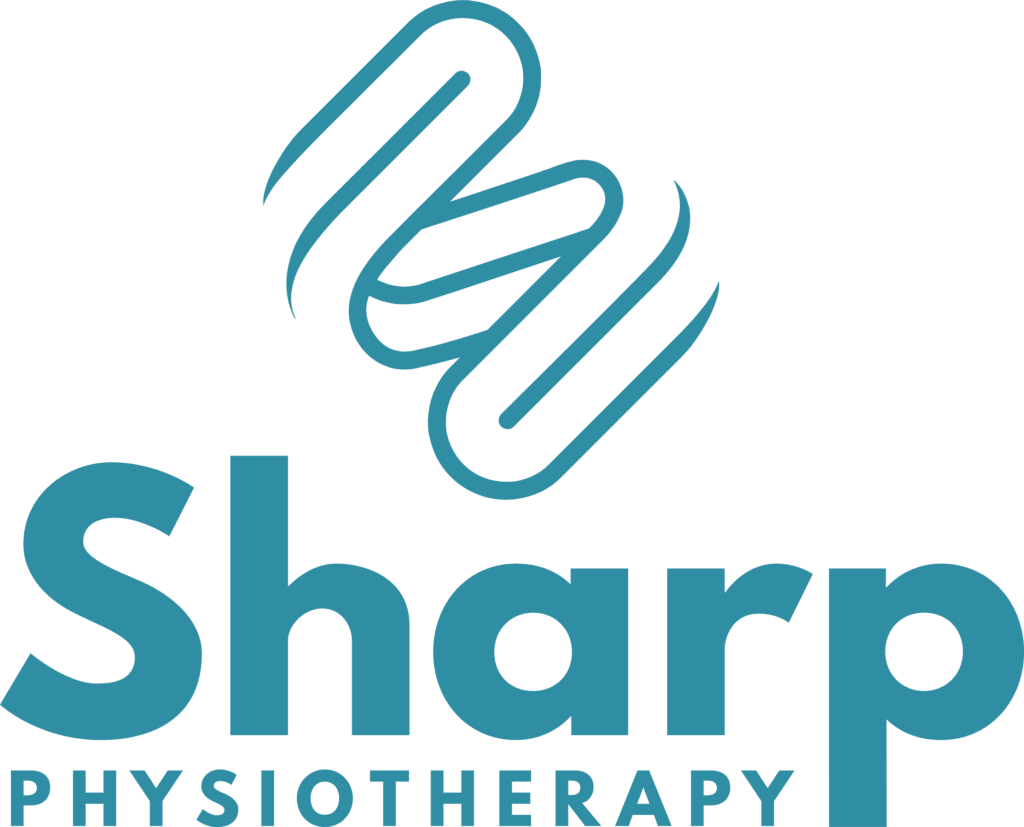What Causes Foot & Ankle Pain?
What are the most common symptoms of foot and ankle pain?
- Pain or stiffness in the ankle.
- Pain or stiffness in the heel during first steps in the morning.
- Worsening symptoms with walking.
- Pain worsens or eases in certain types of footwear.
- Symptoms are aggravated with hill walking.
- Pain in the ball of the foot.
- Tingling or numbness in the toes.
- Feeling as though there is a lump under the ball of the foot.
- Inability to fully weight bear due to foot or ankle pain.
- Extreme calf tightness.
What causes heel pain? Can shockwave therapy help?
Shockwave therapy can be an excellent treatment option for heel pain originating from conditions such as Achilles tendinopathy or plantar fasciitis and has a high success rate. Shockwave therapy is often integrated into a treatment plan rather than being used as a standalone treatment.
While shockwave therapy can effectively alleviate symptoms of heel pain and promote healing, identifying and addressing the underlying cause of the condition is crucial for optimal results and preventing recurrence.
Top 10 most common foot and ankle injuries that we treat:
- Achilles Tendinopathy
- Plantarfasciitis
- Mortons Neuroma
- Tibialis Posterior Tendinopathy
- Bunions & Big Toe Pain
- Stress Fractures
- Shin Splints
- Syndesmosis Injuries
- Ankle Ligament Injuries
- Foot & Ankle Fractures
See what our patients have to say...
Sarah's Story
“The treatment I received was superb. When I first came here I had a limp and as much as I tried I could not get rid of that. I had been in pain so long I couldn’t manage life without it but after my first session I walked out of here without that limp, so I was just so happy because I knew things were going to get better.”
Our top tips for preventing foot and ankle pain.
- Choose Appropriate Footwear:
Wear shoes that provide proper arch support, cushioning, have a wide toe box and a comfortable fit. Avoid high heels for extended periods, and select footwear suitable for specific activities. - Maintain a Healthy Weight:
Maintain a healthy weight to reduce excess stress on the feet and ankles. Excess body weight can contribute to conditions such as plantar fasciitis. - Proprioceptive Training:
Proprioceptive training is a type of exercise that focuses on improving proprioception, which is the body’s ability to sense its position in space. This form of training often involves activities that challenge balance, coordination, and joint awareness. - Strength Training:
Strengthening the muscles around the ankle, including the calf muscles, peroneals, and tibialis anterior, helps provide better support to the joint. Strong muscles can better absorb and distribute forces, reducing the risk of excessive stress on the tendons, ligaments and joints. - Gradual Increases in Activity:
When starting a new exercise or activity, make gradual increases in intensity and duration to allow your feet and ankles to adapt. This will reduce your risk of over use injuries such as Achilles tendinopathy & plantar fasciitis. - Proper Warm-Up and Stretching:
Warm up before exercise, and include stretching exercises for the calves. - Address Biomechanical Issues:
If you have flat feet, high arches, or other biomechanical issues and you are getting pain, consider using orthotic inserts to provide additional support and improve alignment. - Listen to Your Body:
Pay attention to any signs of discomfort or pain. If you experience persistent or worsening pain, consult with a healthcare professional for an assessment.
Why We Are Different
We do not just hand out exercise sheets.
Many peoples perception of physiotherapy in the UK is that you get given an exercise sheet to do at home and nothing more. We diverge from this, and take a distinct approach to physiotherapy that offers a hands on and more personal approach.
Unlike many physiotherapy providers that merely hand out exercise sheets, we prioritise manual therapy techniques within the session to ensure not just quick, but often instant results for our patients. While our clinic places a strong emphasis on manual therapy for immediate pain relief, we do recognise the important of rehab exercises for long term health and injury prevention.
01
We get to the very root of your problem.
We stand out by specialising in identifying the root cause of our patients’ issues rather than solely treating the symptoms. This approach allows us to provide personalised care that ensures long lasting results.
02
We do not try to sell you more appointments than you need.
We take pride in our approach because we don’t believe in recommending more sessions than you need. Unlike some practices, we don’t advocate for more sessions than necessary and our focus is on providing precisely the care you need to achieve the outcome you want, ensuring a cost-effective path to your recovery.
03
Frequently asked questions
Are Flat Feet A Cause Of Foot Pain?
Flat feet, also known as fallen arches or pes planus, can be a potential cause of foot pain for some individuals. Flat feet occur when the arches of the feet are lower than normal or completely absent. This condition can be present from childhood or develop over time due to factors like aging, injury, or excessive wear and tear on the feet
- Overpronation:Flat feet can lead to overpronation, where the feet roll excessively inward while walking or running. Overpronation can cause strain on the ligaments and tendons in the feet, leading to pain, especially in the arches and heels.
- Lack of Arch Support:The arches of the feet act as natural shock absorbers. In individuals with flat feet, the lack of proper arch support can result in inadequate shock absorption, leading to increased stress on the feet and ankles as well as knees hips and lower back.
- Strain on Muscles and Tendons:The muscles and tendons that support the arch such as the tibialis posterior tendon, may become strained due to the flattening of the foot. This strain can result in pain and swelling, particularly along the inner side of the foot and of the arch.
- Foot Fatigue:Flat feet can contribute to increased fatigue and discomfort, especially during prolonged periods of standing or walking. The lack of arch support can make it challenging for the feet to distribute weight evenly.
- Development of Other Conditions:Flat feet will often contribute to the development of other foot conditions, such as plantar fasciitis (inflammation of the tissue connecting the heel to the toes) or Achilles tendonitis (inflammation of the Achilles tendon).
Why Is My Heel So Stiff & Sore In The Morning?
There are 2 likely causes of a stiff and sore heel first thing in the morning and they are Achilles tendinopathy and plantar fasciitis. Tendinopathies often feel stiff in the morning due to a phenomenon known as “start-up pain” or “morning stiffness. Overnight, when you’re asleep, your body is relatively immobile. This lack of movement can lead to reduced blood circulation and stiffness in the tendons. Tendons thrive on movement to maintain their flexibility and function optimally.
Why Do I Keep Rolling My Ankle?
Repeated ankle rolling, or ankle instability, can be caused by various factors. If you have had a previous ankle ligament injury, it may be that your ligament has healed in a stretched position. This can often be overcome with strengthening and proprioceptive exercises through and a specific ankle rehabilitation program. If you find yourself repeatedly rolling your ankle, it’s essential to address the underlying causes as soon as possible as recurrent ankle sprains can lead to ankle arthritis.
Why Does My Pain Get Worse Barefoot Or With Flatshoes?
Experiencing increased foot pain when barefoot or in flat shoes could be attributed to several factors. The first is a lack of arch support. Flat shoes, including going barefoot, often lack proper arch support. This can lead to abnormal strain on the soft tissues including the achilles tendon and plantar fascia, leading to pain and inflammation. Barefoot or shoes with minimal cushioning provide less shock absorption. Without proper cushioning, the impact on the feet can be greater, leading to increased pain, especially in areas like the heel or ball of the foot.
Can High Heels Cause Foot Pain?
Wearing high heels can contribute to foot pain and various foot-related issues. Here are several ways in which high heels may impact foot health:
- Pressure on the Ball of the Foot:High heels shift the body’s weight forward, increasing pressure on the ball of the foot and toes. This can lead to pain and discomfort, especially during prolonged periods of standing or walking.
- Toe Deformities:Regularly wearing high heels can contribute to the development of toe deformities, such as bunions and hammertoes. Bunions are characterized by a bony bump at the base of the big toe, while hammertoes involve a bending or deformity of the smaller toes.
- Achilles Tendon Shortening:The elevated heel position in high heels causes the Achilles tendon to contract and tighten. Over time, this can lead to Achilles tendon shortening, making it uncomfortable to wear flat shoes and contributing to pain in the back of the heel.
- Increased Risk of Ankle Sprains:The instability created by high heels increases the risk of ankle sprains and instability. The narrow base and elevated height make it more challenging to maintain balance, leading to a higher likelihood of accidents and injuries.
- Foot Fatigue:Wearing high heels alters the natural alignment of the foot, which can result in increased fatigue and discomfort. The muscles and tendons in the feet may experience strain due to the unnatural position.
- Joint Pain and Arthritis:Prolonged use of high heels may contribute to joint pain and an increased risk of developing arthritis in the knees and other joints. The altered gait and posture can have long-term effects on joint health and the entire kinetic chain.
- Impact on the Spine:The altered posture induced by high heels affects not only the feet but also the spine. It can lead to lower back pain and discomfort as the body attempts to adapt to the changed alignment.
- Calluses and Corns:High-pressure areas on the feet, often caused by friction and uneven weight distribution in high heels, can lead to the formation of calluses and corns.
Can Foot Pain Be A Sign Of Arthritis?
At our physiotherapy clinic, we’ve observed that a significant number of patients presenting with foot pain do not have arthritis.
While arthritis is a possible factor for some individuals, it’s important to recognise that foot pain is a diverse issue with various origins, and our goal is to address each patient’s unique needs for optimal recovery.
Arthritis is a condition characterised by inflammation of the joints, and it can affect various joints in the body, including those in the feet.
There are several types of arthritis, with osteoarthritis and rheumatoid arthritis being among the most common ones that can impact the feet.
- Osteoarthritis (OA):Osteoarthritis is a degenerative joint disease that occurs when the protective cartilage that cushions the ends of bones wears down over time. In the feet, osteoarthritis can affect the joints of the toes, ankles, and even the midfoot. Common symptoms include pain, stiffness, and reduced range of motion in the affected joints.
- Rheumatoid Arthritis (RA):Rheumatoid arthritis is an autoimmune disorder that causes inflammation of the joints, often starting in the small joints of the hands and feet. In the feet, RA can lead to pain, swelling, and deformities of the toes. It can also cause inflammation of the joints in the ankle.
- Gout:Gout is another type of arthritis that can affect the feet. It occurs when there is a buildup of uric acid in the blood, leading to the formation of crystals in the joints. The big toe is a common site for gout attacks, causing intense pain, swelling, and redness.
Request a Free Discovery Call
And ask all the question you need to about your foot or ankle pain.
Our Recent Posts on Foot & Ankle Pain
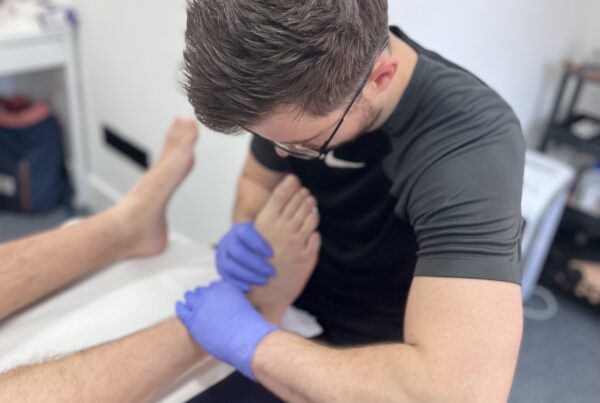
Sarah’s Success Story: Returning to Sports after a Torn Ankle Tendon
Let's Start Treating Foot and Ankle Injury
Use our online booking system below and select a date and time that fits into your schedule with one of our highly skilled practitioners.
Book Now
